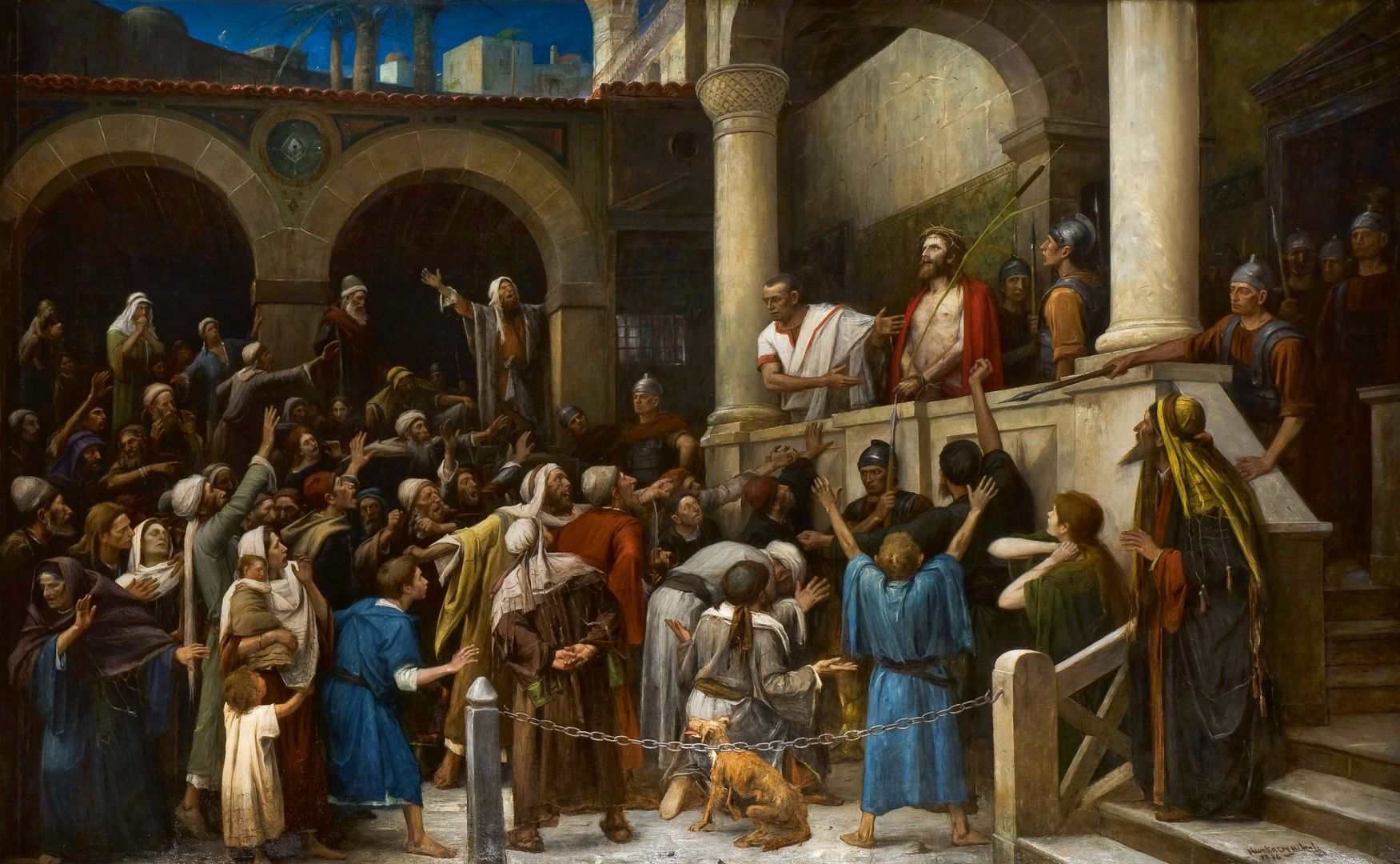The "Colossal" Paintings and World Renown - 6
ECCE HOMO (SKETCH)
MUNKÁCSY Mihály
(1844–1900)
ECCE HOMO (SKETCH)
1896
Oil on panel
Museum of Fine Arts – Hungarian National Gallery, Budapest
Inv. no. 2061
The third piece in the Christ trilogy, Ecce Homo, depicts the final encounter between Christ and Pilate. At Passover, the oppressed Jewish people were given the opportunity to save one prisoner from the death sentence. At the people's insistence, the Roman governor released the criminal Barabas and had the innocent Jesus flogged. To show that Jesus is innocent, he presented the misguided, fanatical crowd with the Messiah, tortured and crowned with thorns, uttering the now familiar words: "Behold the man!" (Ecce homo). At this, the bloodthirsty mob called even more fervently for Jesus's death. The sketch of the large-scale painting on display here - together with the reduction of Christ before Pilate - allow us a glimpse into Munkácsy's creative process.
It was hugely important to Munkácsy to have as many of his paintings as possible shown at the Millennium Exhibition, although his efforts to get hold of some of his important early works - which had been taken to America - proved unsuccessful. It was to compensate for their absence that he painted Ecce Homo, the third piece in the Christ trilogy and the final work in his oeuvre. Already seriously ill by that time, the artist undertook this last great work with the help of his students. Many claim to see in the tortured Christ a self-portrait of Munkácsy, who was then struggling not only with a terminal illness but also with a falling interest in his work, owing to the emergence of new stylistic trends.
Shown in a separate pavilion, the painting attracted 315,000 visitors at the Millennium Exhibition in 1896. Munkácsy joined in the celebrations but was taken ill during one of the evening receptions, which proved to be his last public appearance.
Munkácsy himself never saw the three paintings in the trilogy side by side. In a historic moment, on 24 August 1995, 99 years after the completion of the third painting, the Christ trilogy was united for the first time in the Déri Museum in Debrecen.

